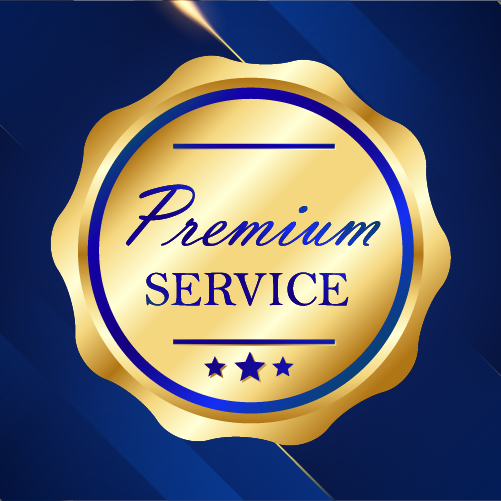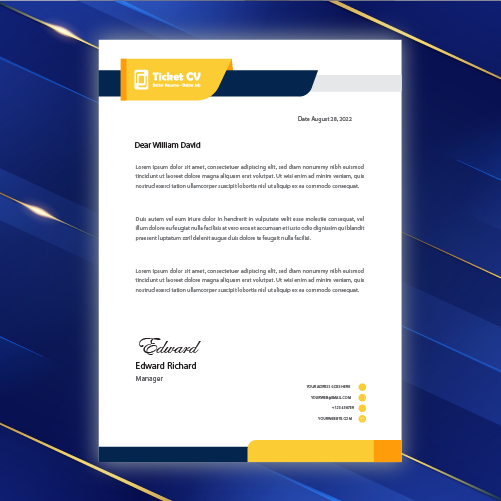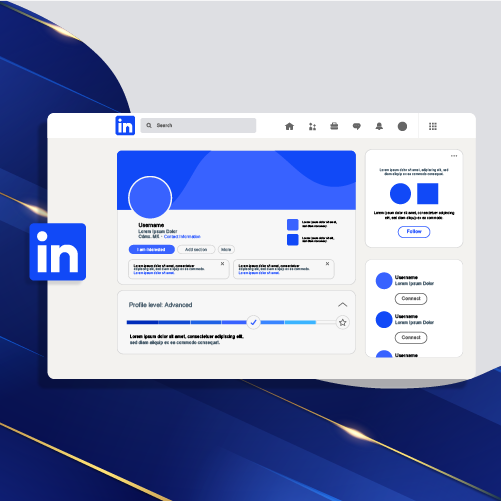A well-planned virtual career fair set up is crucial for recruiting volunteers and organizing successful events. The company’s advertisement sets the stage for productive interactions and fosters a positive impression of the organization’s landing page, logo, and contact. Key elements such as booth layout, branding, and interactive activities play a significant role in attracting and engaging with potential candidates at virtual job fairs. This is especially important for recruiting and advertisement through the landing page. In addition to this, effective communication with the organizing committee, industry-specific materials, and an inviting space on the virtual event platform are essential to create a memorable experience for attendees at job fairs. This includes advertisement and recruiting efforts. The right advertisement setup can make all the difference in leaving a lasting impact on those who visit. It’s all about finding the right time to catch a person’s attention and make them question what they see.
Contents
TogglePlanning Your career fair set up
Setting up a successful job fair on an event platform requires careful planning and execution. Here are the key aspects to consider for a well-organized career fair on an event platform.
Goal Setting
Defining clear objectives for the career fair is crucial. This involves establishing measurable targets for employer and job seeker participation on the platform, aligning goals with the overall recruitment strategy, and ensuring that the event serves its purpose of connecting job seekers with potential employers effectively.
Logistics
Securing an appropriate venue with ample space and facilities is essential for accommodating both employers’ booths and attendees on the platform. Organizing transportation and parking arrangements for attendees contributes to a smooth flow of traffic within the event space, enhancing the overall experience for all participants on the platform.
Staffing Support
Recruiting and training event staff and volunteers is vital to ensure seamless operations on the platform during the fair. Assigning roles and responsibilities to team members helps in managing various aspects of the event effectively on the platform. Coordinating communication channels among staff members ensures efficient coordination before, during, and after the job fair.
Building Your Career Fair Brand
Utilize social media platforms to advertise your career fair set up and attract job seekers. Create engaging posts with relevant hashtags, share behind-the-scenes preparations, and highlight participating employers to generate excitement.
Develop a strong brand presence by incorporating your logo and industry-specific messaging into all promotional materials. This helps in creating a cohesive and recognizable identity for your career fair booth, making it easier for job seekers to identify and remember you.
Engage with recruiters and job seekers throughout the event to build a successful job fair reputation. Encourage interactions through interactive activities, Q&A sessions, or live demonstrations at your booth. Positive experiences can lead to word-of-mouth recommendations and contribute to the overall success of the event.

Compelling Landing Page
Design an engaging and informative event website showcasing essential details such as date, time, location, participating employers, and any special features like workshops or networking sessions. An intuitive layout with clear navigation ensures that visitors can easily access the information they need.
Incorporate registration and RSVP features on the landing page to streamline attendee management. This allows you to gather valuable data about potential attendees while also providing them with a convenient way to express their interest in attending.
Marketing Strategies
Develop a comprehensive promotional plan using various channels including email marketing, digital advertising, and press releases. Leverage social media platforms not only for advertising but also for creating buzz around the event through countdown posts, sneak peeks, or testimonials from previous attendees.
Collaborate with industry partners for cross-promotion opportunities where both parties can promote each other’s participation in the career fair. This expands reach within relevant professional networks and increases the likelihood of attracting diverse groups of job seekers.
Attracting Employers and Attendees
To attract a diverse pool of job seekers to the career fair, utilizing social media and targeted advertising is crucial. These platforms allow for precise targeting based on demographics, interests, and location, ensuring maximum reach and engagement. Offering interactive and engaging activities at employer booths can draw in potential candidates, such as skill assessment challenges or informational sessions about the company’s culture and opportunities.
Moreover, providing virtual job fair options expands the reach of employers and attendees. This approach offers more flexibility in terms of participation, enabling individuals from different locations to engage with potential employers. It provides an extended window for networking and recruiting beyond the confines of a physical event.
Recruiting Employers
Reaching out to potential employers through targeted outreach efforts is essential. This involves highlighting the benefits of participating in the career fair, such as access to a diverse talent pool and networking opportunities. Providing clear instructions for registration and booth setup streamlines the process for employers, making it easier for them to participate.
Targeting Job Seekers
Tailoring marketing messages to attract diverse job seekers ensures that the event appeals to a wide range of individuals. Utilizing online job boards and professional networks effectively reaches potential candidates who are actively seeking new opportunities. Highlighting the value of attending the career fair for job seekers emphasizes the unique chance to interact directly with recruiters from various companies.
Designing Your Career Fair Set Up
Layout Considerations Planning the layout is crucial for ensuring easy navigation at the career fair. Allocating specific areas for different industry sectors or company sizes can help attendees efficiently locate their areas of interest. Creating clear signage within the event space can guide visitors to various booths and sections.
Visual Appeal Enhancing the visual appeal of booths and event spaces is essential in attracting both employers and attendees. Incorporating branding elements into the design helps companies stand out and reinforces their brand identity. Using eye-catching displays, such as vibrant banners or interactive screens, can significantly attract attention and draw visitors to the booth.
Preparing for the Job Fair
Researching the list of employers attending the job fair is crucial for prioritizing visits. It helps in preparing an elevator pitch and updating CVs to leave a lasting impression on potential employers. Familiarizing oneself with the layout of the career fair venue is essential to plan routes and maximize time.
Checklist Creation
- Developing comprehensive checklists for exhibitors and attendees ensures all necessary items are accounted for during booth setup.
- Outlining essential items needed for booth setup and promotional materials aids in a well-prepared exhibit.
- Providing a timeline checklist ensures that all preparations are on track leading up to the event.

Roadmap Provision
- Offering guidance on navigating the event schedule allows job seekers to make the most of their time at the job fair.
- Providing maps or digital floor plans makes it easier for attendees to locate specific employers or booths.
- Scheduling informational sessions or workshops throughout the day keeps potential candidates engaged and informed about available opportunities.
Engaging Candidates Effectively
Utilize targeted advertising to attract potential candidates by promoting the career fair across relevant platforms and communities. This can include social media, industry-specific websites, and university job boards.
Train recruiters to effectively engage with job seekers by providing them with communication strategies and active listening techniques. This ensures that they can effectively communicate the company’s values and available positions to potential candidates.
Offer opportunities for employers to showcase their company and available positions through interactive elements such as virtual tours or video presentations, enhancing the effectiveness of their CV. This allows job seekers to gain a comprehensive understanding of the company culture and available roles.

Incorporating interactive activities to engage both employers and job seekers can involve setting up networking opportunities through interactive sessions or games. For example, hosting a speed networking event where participants have short, structured interactions with various employers.
Including technology-driven elements such as QR code scanning or virtual tours adds an innovative touch to the TicketCV career fair setup. Job seekers can use TicketCV QR codes to easily access company information, while virtual tours provide an immersive experience of the workplace environment.
Distributing relevant materials such as company profiles, job descriptions, and industry insights ensures that job seekers have access to valuable information about participating employers. Utilizing digital platforms like dedicated event apps enables real-time sharing of information during the event.
Ensuring accessibility to important resources for both employers and job seekers is crucial for a successful job fair. This includes providing designated areas for one-on-one conversations between recruiters and candidates, as well as spaces for informational sessions regarding career opportunities within participating companies.
Advertising the Event
Utilizing social media is crucial for promoting the career fair and reaching potential attendees. Platforms like LinkedIn, Twitter, and Facebook can be used to create event pages, share engaging content about the fair, and target specific demographics to maximize visibility.
Creating an engaging landing page on the event platform is essential for attracting participants. The page should provide comprehensive information about the fair, including participating companies, available job opportunities, and any special features or workshops.
Collaborating with recruiters to advertise the job fair is a strategic way to maximize participation. Recruiters can leverage their networks and platforms to spread the word about the event, increasing its reach and impact.
Online Campaigns
- Implement targeted online campaigns to drive awareness and registrations.
- Leverage email marketing to communicate updates and reminders.
- Utilize online advertising to reach a wider audience.
Offline Outreach
- Engage in local community outreach efforts to promote the career fair.
- Partner with educational institutions, community centers, and local businesses.
- Distribute printed materials in strategic locations.
Evaluating Success Post-Fair
Measuring the number of potential candidates who visited your booth and interacted with your team is crucial for assessing the impact of your participation in a career fair. It provides insights into the level of interest in your company’s opportunities and helps in evaluating the quality of interactions with job seekers.
Implementing systems to capture attendee demographics and feedback is essential for comprehensive data collection. This includes gathering information on employer participation, hiring needs, satisfaction levels, and metrics related to attendee engagement and interaction.
Gathering post-event feedback from both employers and job seekers aids in understanding their overall satisfaction with the event. Conducting surveys or interviews can provide valuable insights into areas of improvement based on feedback analysis.
Assessing the return on investment by comparing the cost of participation to the number of qualified candidates engaged enables you to gauge the effectiveness of your presence at career fairs. It allows for a quantitative evaluation of how successful job fairs have been in terms of recruiting potential candidates.
Conclusion
In conclusion, a well-planned and executed career fair set up can significantly impact both job seekers and employers. By following the comprehensive guide provided in the preceding sections, event organizers can create a compelling and successful job fair experience. From initial planning to post-event evaluation, every aspect plays a crucial role in ensuring the effectiveness of the career fair.
As you move forward with organizing your career fair, remember that attention to detail and proactive engagement with both employers and candidates are key. Implementing the strategies outlined in this guide will not only enhance the overall experience for attendees but also contribute to the success of your future career fairs. Keep refining your approach based on feedback and industry best practices to continually improve the impact of your events.
Frequently Asked Questions
How can I effectively attract employers and attendees to my career fair?
To attract employers and attendees, focus on creating a compelling event brand, promoting the fair through various channels, reaching out to potential exhibitors and job seekers directly, and offering valuable incentives for participation.
What are the key elements to consider when designing a career fair booth?
When designing a career fair booth, consider the layout for easy navigation, branding elements that reflect your organization’s identity, interactive components to engage visitors, informational materials about available positions, and a welcoming atmosphere conducive to networking.
How should I prepare for engaging candidates effectively at a career fair?
Prepare by training staff members on effective communication techniques, developing an understanding of your target audience’s needs and preferences, preparing engaging materials and activities at your booth, and ensuring you have clear information about available job opportunities.
What are some effective ways to advertise a career fair event?
Utilize various advertising channels such as social media platforms, industry-specific websites or forums, email marketing campaigns targeting relevant audiences, partnerships with local organizations or educational institutions, and leveraging word-of-mouth through existing professional networks.
What metrics should I use to evaluate the success of my career fair post-event?
Evaluate success by analyzing metrics such as the number of job offers extended during or after the event, attendee satisfaction surveys or feedback forms collected onsite or post-event, employer feedback on candidate quality or quantity received from the fair.











